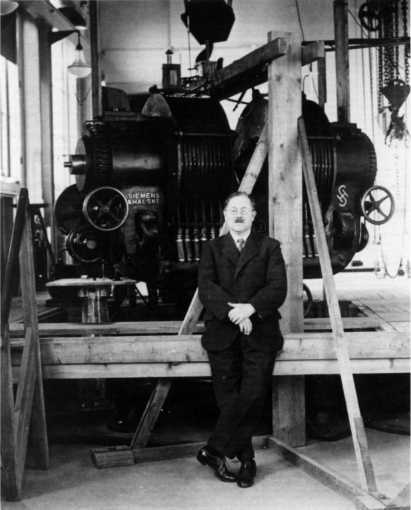Wander Johannes de Haas, 1878-1960

|
Wander Johannes de Haas, born 2 March 1878, was the son of a schoolmaster. After finishing high school in 1895 he first started to read for the examinations for notary public, but after having passed two of the required three and after having worked for a short period in a notary's office, he decided that this career was not to his taste and he went to Leiden to study physics. He was assistant to Kamerlingh Onnes from 1905 to 1911, and in 1912 he obtained his doctor's degree with the thesis: "Measurements Concerning the Compressibility of Hydrogen, in Particular of Hydrogen Vapor at and below the Boiling Point". (A thesis in the Leiden tradition of "door meten tot weten".) In the meantime he had married Lorentz's eldest daughter, Geertruida Luberta, herself a theoretician of merit, and in 1911 the young couple had moved to Berlin. There he worked first with Professor H. du Bois, a specialist on magnetism, a subject that was more to his taste than the accurate measurement of isotherms and vapor pressures. From 1913 to 1915 he was "Wissenschaftlicher Mitarbeiter" at the Physikalisch Technische Reichsanstalt. It was there that he, together with Einstein, did the work on the phenomenon that is still known as the Einstein-De Haas effect.
In 1917 he became professor at Delft, in 1922 at Groningen; in 1924 he returned to Leiden. De Haas died 26 April 1960 in Bilthoven.
De Haas is best known for two magneto-electric effects, the Shubnikov-De Haas effect and the De Haas-Van Alphen effect.
Around 1930 the Russian physicist Shubnikov spent quite some time at Leiden in the group of De Haas and did remarkable work on the magneto-resistance of bismuth. It was known since the end of the nineteenth century that the electrical resistance of bismuth increases considerably in a magnetic field and it was also known that this effect becomes more pronounced at low temperatures. It was therefore perhaps to be expected that the effect would be even larger at hydrogen temperatures, but I do not think anybody had expected an increase by a factor of several hundred thousand in a field of 30,000 Gauss at a temperature of 14 K. Such spectacular results were obtained with extremely pure single crystals: Shubnikov started from the purest metal he could get and recrystallized it numerous times.
As early as 1914 De Haas had pointed out that there might be a correlation between diamagnetism and change of resistance in a magnetic field, so it is not surprising that after the spectacular results of Shubnikov he suggested to one of his students, P.M. van Alphen that he should investigate the diamagnetism of bismuth at low temperatures. That hunch yielded rich rewards. It was found that the diamagnetic susceptibility of bismuth at low temperatures is not constant but shows periodic variations as a function of the magnetic field. That is the famous De Haas-Van Alphen effect that later in the hands of Shoenberg and others became an important tool for finding details of the states of electrons in metals.
De Haas was imaginative and whimsical. His flights of fancy were sometimes disconcerting, often constructive, and always amusing. He delighted in little experimental tricks. His health was frail and he was often unable to give regular lectures. That was a pity, for if he was in the right mood he could design most ingenious lecture demonstrations and present them with an inimitable kind of dry humor.
H.B.G. Casimir, Haphazard Reality (Harper & Row, New York, 1983)